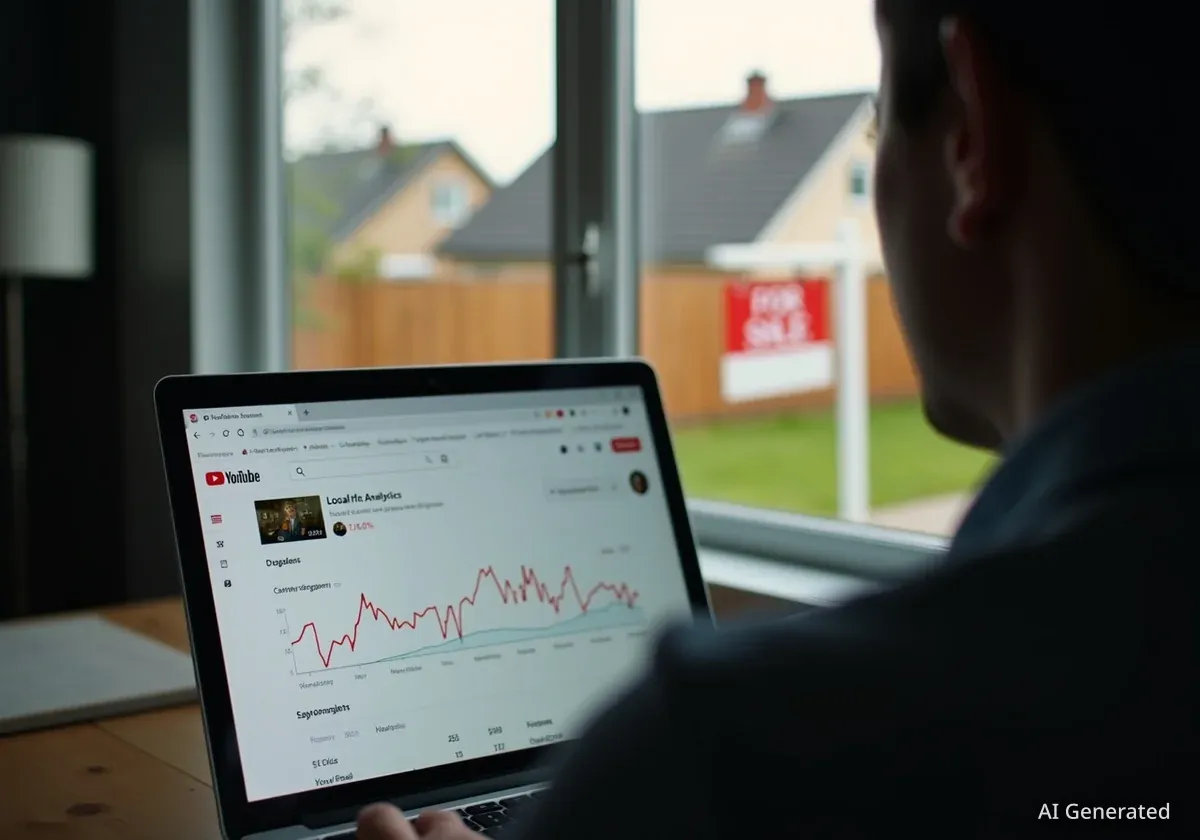A real estate agent's journey to 70,000 YouTube subscribers and millions of views reveals a critical lesson for local businesses: chasing viral fame can unintentionally damage the very enterprise it was meant to support. The experience highlights a fundamental strategy choice between building a national audience and serving a local market, a decision that can determine a business's success or failure on the platform.
Kati Spaniak, a real estate professional on Chicago’s North Shore, discovered this paradox after her channel, intended to generate local leads, instead attracted a massive national following. While the subscriber count grew, her local business stagnated, forcing a complete reevaluation of her digital marketing strategy and leading to an unexpected but successful business pivot.
Key Takeaways
- Building a YouTube channel with broad, general-interest content can attract a large but irrelevant audience for a location-specific business.
- Time and resources spent creating viral content may detract from essential local marketing and networking activities.
- The YouTube algorithm can make it difficult to pivot from a national to a local content strategy once an audience is established.
- A successful national channel can be monetized through alternative models, such as a referral network, but this requires a different business plan.
- Experts advise businesses to define their target audience—local or national—before creating any content to avoid strategic pitfalls.
The Initial Goal: A Local Marketing Machine
In 2017, Kati Spaniak launched her YouTube channel with a clear objective: to create a powerful marketing tool for her real estate business in the North Shore area of Chicago. The prevailing belief was that a strong online presence, measured in views and subscribers, would directly translate into a steady stream of local buyers and sellers.
"I assumed if I racked up thousands of views, buyers and sellers in my neighborhood would call nonstop, ready to list and buy," Spaniak explained. This assumption is common among entrepreneurs and small business owners who turn to digital platforms for growth, hoping to scale their operations without traditional methods like cold calling.
For the first few years, the channel focused on content relevant to her community. However, the growth was modest. The turning point came when she shifted her strategy away from hyperlocal updates and began creating videos with broader appeal.
The Problem with Going Viral
The channel's viewership exploded approximately two years ago when Spaniak started producing content for any home seller, regardless of their location. Videos offering general advice, such as a segment on "Magic Paint Colors," went viral, accumulating over half a million views. This success rapidly grew her subscriber base to around 70,000 and generated millions of views across her channel.
By the Numbers
- 70,000: Approximate number of subscribers on the channel.
- 500,000+: Views on a single viral video about paint colors.
- 8 Years: The timespan over which the channel grew and the strategy evolved.
However, this viral success came with a significant downside. The vast majority of her new audience was not in her local market. Viewers were tuning in from across the United States and even internationally. While she was building trust and authority, it was with an audience that could not legally or practically hire her to sell their homes.
An Audience Mismatch
Spaniak found herself in a paradoxical situation. She was becoming a nationally recognized real estate expert online, yet her local business was suffering. The time invested in creating, filming, and editing videos for a national audience was time she could have spent on local prospecting, networking, and marketing.
"Every agent knows the most valuable resource isn’t money; it’s time," Spaniak noted. "Every hour I spent making the wrong videos was an hour I wasn’t prospecting, marketing or networking with people who could actually pay me."
The search visibility of her channel reflected this mismatch. A user in California searching "Sell Your Home" would likely see her videos, but someone searching "Sell Your Home on the North Shore of Chicago" would not. She had inadvertently optimized her content for the wrong customer base, becoming a prominent voice for everyone except her target market.
The Algorithmic Trap
Recognizing the strategic error, a simple pivot back to local content seemed like the logical next step. However, YouTube's algorithm presented a formidable obstacle. Her 70,000 subscribers had subscribed for general home-selling tips, not for specific market updates about a Chicago suburb.
How the YouTube Algorithm Works
YouTube's recommendation system prioritizes viewer satisfaction. When a creator uploads a new video, the platform shows it to a segment of their subscribers. If those subscribers watch and engage with it, YouTube promotes it to a wider audience. If they ignore it, the video's reach is suppressed. For Spaniak, her national audience's lack of interest in local content signaled to the algorithm that her new videos were not engaging, effectively halting their promotion.
When she tried posting hyperlocal videos, her national audience did not click or watch. This low engagement from her own subscriber base was a negative signal to YouTube. As a result, the platform stopped pushing her new content, effectively neutralizing the large audience she had worked so hard to build. The channel was now trapped, unable to serve its original purpose.
"You’ve basically tanked what you built," Spaniak warned. "You can’t easily pivot back."
A New Business Model from an Old Mistake
While the initial goal of boosting local sales failed, the national audience she had cultivated presented an entirely new opportunity. Instead of seeing the millions of non-local viewers as a loss, Spaniak transformed them into a new revenue stream: a national referral network.
Over the past two years, she has successfully referred thousands of sellers from her YouTube audience to top-performing real estate agents in their respective local markets. This pivot allowed her to monetize the trust and authority she had built with her national following. The content creation that had hurt her local business became the foundation for an entirely different, and highly successful, enterprise.
This outcome, however, was an unintended consequence of a flawed initial strategy. It required building a new business model from the ground up, a path that may not be feasible for everyone.
The Critical Choice: National vs. Local
Spaniak's experience offers a crucial lesson for any business owner, consultant, or service provider looking to leverage YouTube for marketing. The most important decision must be made before ever pressing the record button: are you building a national channel or a local one?
Strategy 1: The Local Expert
For businesses that operate within a specific geographic area, the goal should not be to go viral. Instead, the focus should be on creating highly specific, valuable content for the local community.
- Content Ideas: Neighborhood tours, school district reviews, local market statistics, interviews with local business owners, and guides to community events.
- The Goal: To be discovered by a small number of highly qualified potential clients in your service area.
- The Metric for Success: Not views, but local leads and conversions. As Spaniak puts it, "10,000 views on a national paint video won’t beat 100 views on a market-update video from people right in your local market."
Strategy 2: The National Brand
If the goal is to build a national or international brand, the content must have broad appeal. This path can lead to a large audience, brand deals, and alternative revenue streams like referrals or digital products. However, business owners must understand that this strategy will likely not support a local, service-based business directly.
"If you want a national brand, go all in; just know it won’t drive local leads," Spaniak advises. "It might open doors, but it won’t directly put money in your pocket for possibly a few years."
Ultimately, a lack of clear direction can cost years of time and effort. By defining the target audience from day one, businesses can use YouTube as the powerful tool it is intended to be, ensuring that every view contributes to their primary objective.





